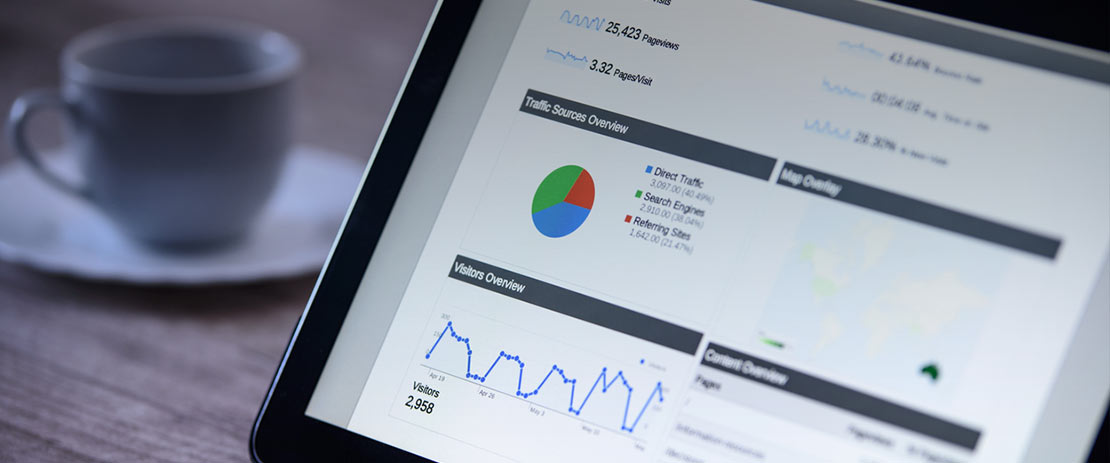Being a marketer, your job is incomplete if you don’t use Google AdWords to drive traffic because it means you’re missing as much as 75% of search traffic.
Marketers know the importance of AdWords but they struggle to improve click-through rate (CTR) and thus ROI of their campaigns.
It’s no doubt challenging because there are several variables involved.
For instance, the CTR in AdWords majorly depends on your ad position which in turn is linked to several factors like keywords, bid, quality score, keyword relevance, and other factors. High CTR reduces your ad spend and you drive targeted traffic to your landing page which improves ROI.
With this in mind, let’s jump to ground realities. What exactly you can do to improve CTR and ROI of your AdWords campaigns starting today?
Here are the 13 Google AdWords hacks from our Nashville online advertising company that will take your campaigns from zero to hero in absolutely no time. You can implement all these hacks almost immediately.
1. Use CTR best practices
How many of the CTR best practices do you use? Better yet, how many of such CTR best practices do you actually know?
Most marketers and advertisers, unfortunately, are more concerned about ‘bigger’ factors and they forget to follow the proven rules that are sure to improve their campaigns’ CTR. This is a must if you’re running a PPC campaign for lawyers.
You must have heard that Google AdWords users earn $2 for every $1 they invest in AdWords.
But these types of results are only achieved by a fraction of top advertisers and businesses that know how to make every penny count by skyrocketing their CTR. Everyone else feeds on the leftover.
Here are a few best practices to instantly improve CTR of your campaigns and ad groups.
a). Use Title capitalization: This is something very basic. Use title capitalization in your ad copy so that it looks nice. The headline should look like a headline.
Here’s an example of three different ads:
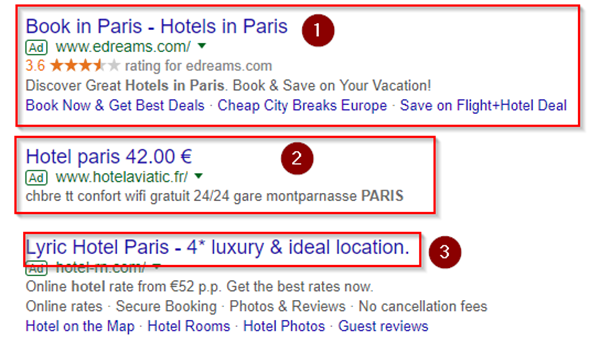
Ad 1: The first ad looks great since it has used title case in the headline as well as in the description. Additionally, they have used extensions too.
Ad 2: Though it is not in English, it is a poorly written ad. You have to have a powerful soul to click on this ad since it looks as if a 9-year old wrote the copy.
Ad 3: The headline doesn’t follow the title case. This gives a bad impression to the readers.
Your audience first sees the ad and if it looks appealing enough, a prospect will read it, and click if it makes sense. If it isn’t formatted, your ad will be ignored and that’s where it hurts your CTR.
It doesn’t cost you a cent to capitalize your headline but the results will make you smile.
b). Ad position: Where your ad is placed will make a lot of difference in the CTR. If your ad shows at the bottom of the second page, no matter how great your copy is, you’ll naturally have low CTR. The ad that appears at the first position has over 36% CTR while ads on the second page have 1.50% CTR.
Here’s the deal, try bidding for the first page. Make sure your ad gets all the chance to be seen, only then you’ll be able to see how good it does in terms of CTR and how you can further improve its click-through rate.
c). Bid on your brand: Increasing bid and pushing your ads to the first page is not always a good idea especially when you’re competing with some really big names. A decent approach is to bid on your brand to be on the first page.
This best practice will only work if you have a famous brand that people know and search for. Lime Ricki used this technique to increase its AdWords CTR by 23x.
Instead of bidding on other keywords, they bid on their brand name and it worked for them. Most of the brands don’t use this tactic to boost CTR. However, it is one practice that can skyrocket your CTR overnight.
2. Improve Quality Score
Quality Score is one of the best-known factors that have a direct impact on CPC and ad position.
Low-Quality Score (QS) will increase your average CPC and will move your ads to lower pages because AdWords consider low QS ads to be of low quality and don’t want these ads to show as often as ads with high QS.
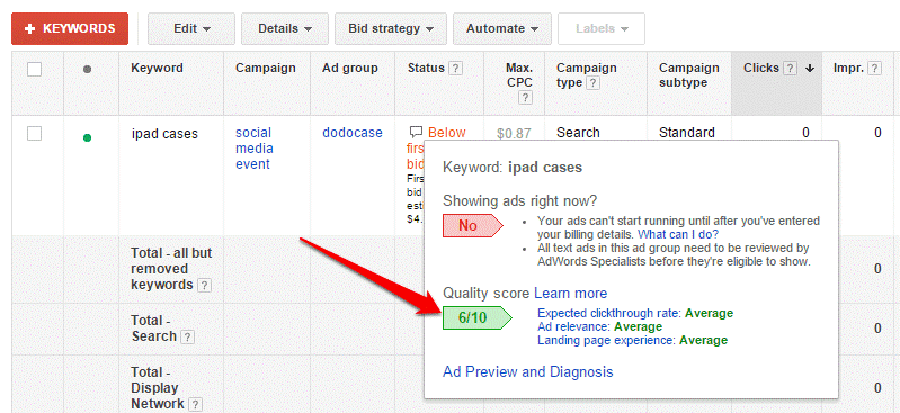
When you check QS in AdWords, you’ll see the status of expected CTR, relevance, and landing page experience. This shows the expected CTR depends on QS which depends on ad relevancy and landing page experience. The equation seems simple.
Fixing QS gets easier if you’ve got smaller ad groups with limited keywords. This helps you identify ad groups, ads, and keywords with low QS.
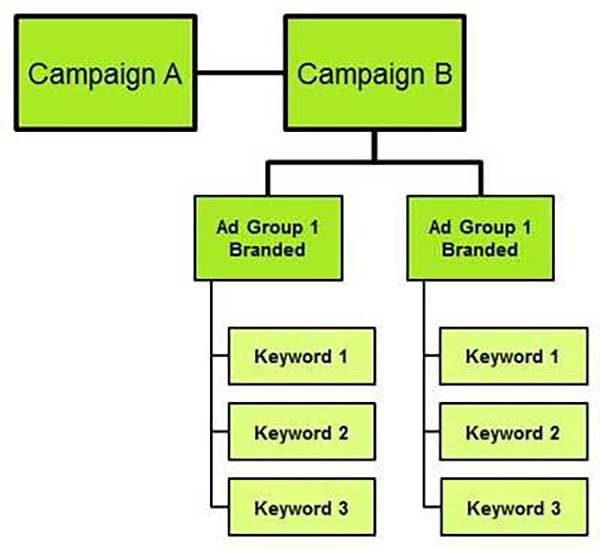
If you have placed all the ads in a single ad group, finding the culprit will get hard. So the first rule is to keep your campaigns simple and less congested.
Here are a few tips to optimize Quality Score:
i). Make your ad copy relevant to the keywords you’re targeting. If you are using dog foods as a keyword, make sure your ad copy is relevant to dog foods.
Here is an example of ad and keyword irrelevancy.
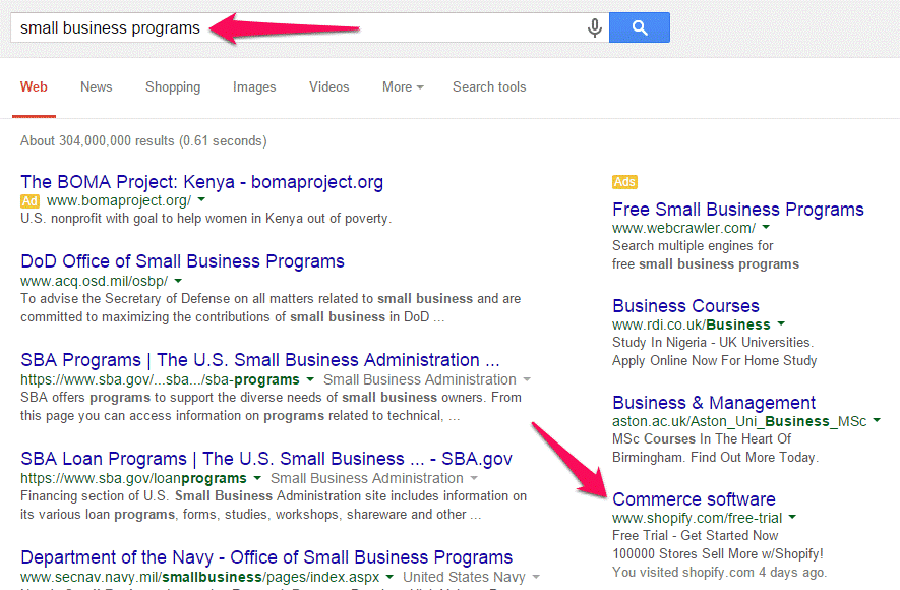
This normally happens when you’re using too many keywords for a single ad or ad group. Sticking to the rule discussed above will keep your ads relevant to keywords.
ii). Creating relevant ads won’t improve ROI if your landing page isn’t relevant to the ad copy. In such a situation, you’ll have a low QS, low CTR, and poor conversion rate.
Here is an example of how an irrelevant landing page can damage your conversion rate and ROI.
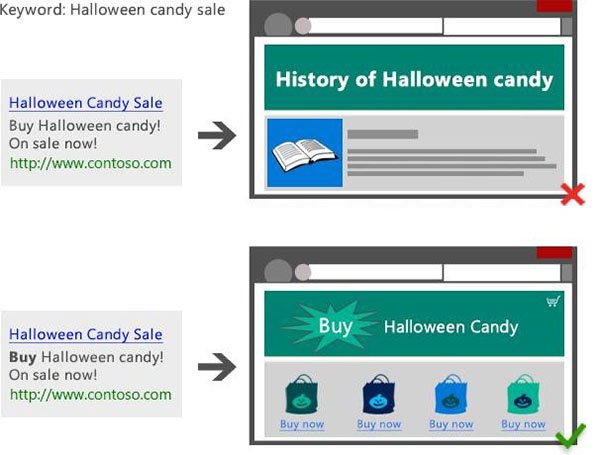
Even if you manage to send traffic to your landing page, you’ll not get conversions. In reality, however, you can’t have a decent CTR with irrelevant landing page because your QS will be way too low.
Improve landing page relevancy and make it relevant to ad copy.
Again, this will become easier if you’ll use several ad groups and ads and you’re using a manageable number of keywords.
iii). Understand other QS factors. Here is a list of other variables that impact QS.
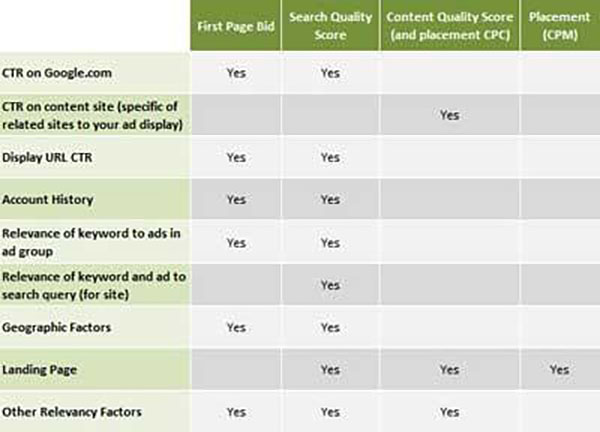
Consider each factor individually to improve overall QS.
3. Create several landing pages for a single campaign
Creating a different landing page for each ad copy and even for every ad won’t just improve the QS but it has a direct impact on your campaigns’ conversion and ROI.
The best hack to improve ROI is to create a separate landing page for each audience type. Every business targets several audience types.
For instance, if you’re running an e-commerce store, you will have several products across different niches and categories. Create a landing page to sell laptops, a different landing page to target photographers, another to target sportsmen, and so on.
There’s hardly any business that doesn’t target multiple audience groups. Consider Peerfly. They target both affiliates and advertisers.
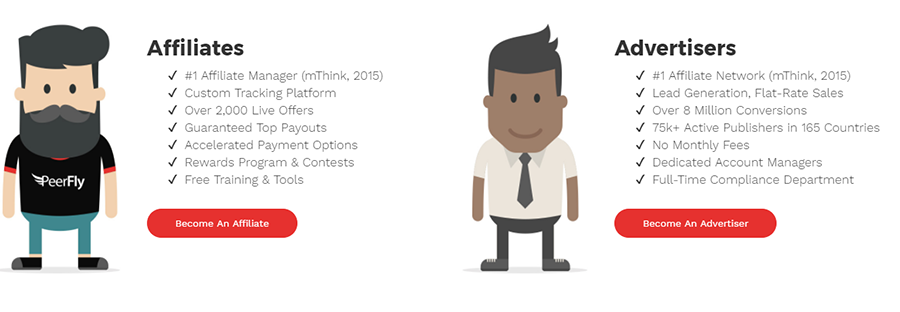
AngelList targets multiple audience groups.

Think of HubSpot.

Do you really think you can use a single landing page to reach your entire target market effectively?
A highly targeted landing page has one clear benefit. It boosts ROI by increasing conversion rate.
There are, however, other secondary benefits:
- Targeted landing pages are relevant to ad copy, thus they will drive targeted traffic. This is the whole point of using different landing pages.
- Targeted and relevant landing pages improve QS which increases CTR and ad position. This again puts you in a better position to improve ROI and make every click count.
- Testing and finding issues in ad groups, ads, and landing pages become easier. Imagine having a couple landing pages for several ad groups and you don’t get enough conversions. You’ll have to move through all the landing pages and ad groups to find and fix the issue.
4. Use ad extensions
An ad extension adds more information about your ad. Some of the ad extensions show automatically with ads such as dynamic sitelink extension, dynamic structured snippet extension, and several others.
There are other ad extensions which you have to choose manually such as location extension, call-out extension, price extension, and several others.
Why bother adding ad extensions?
Ad extensions are great at increasing CTR and ROI. Accor Hotels tested different types of ad extensions to see how different extensions work for them. The results were surprising.
Here’s one of the ads they used in the testing phase.

These are the results Accor Hotels achieved after using different types of ad extensions.
- Sitelink extensions increased CTR by 13%.
- Call extensions increased CTR by 4%.
- Image extensions increased CTR by 24%.
- Review extensions increased CTR by 19%.
You’d love to see such type of results for your restaurant PPC campaigns, right?
Start using ad extensions.
Ad extensions don’t just help with CTR but you drive massive traffic to your site and if your landing page converts at a decent rate, you’ll see a whopping increase in ROI.
You can use multiple ad extensions with a single ad.
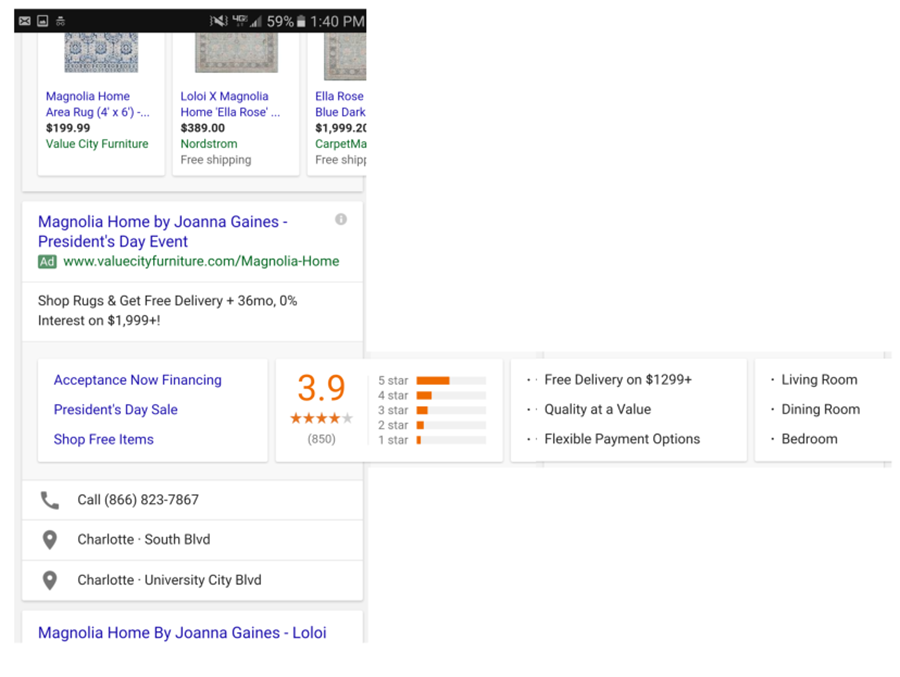
Your job is to test different combinations of ad extensions and see what works best for your target audience groups. It’s not a set and forget kind of hack that will work equally well with each ad group. It calls for some real testing and tweaking.
Start experimenting like Accor Hotels and you might see a massive increase in CTR and ROI.
5. Bid on competitor terms
You must have seen marketers bragging about insanely low CPCs that they pay for AdWords. I’m talking about CPCs as low as $0.10. Yes, this is possible.
Not just that it is possible but there are marketers who are doing it.
How?
They bid on competitor domain name and brand names.
Yes, it’s legal.
According to Google Policies, you can bid on competitor brand and brand terms as long as you don’t add any term that’s trademarked.
Needless to say, a lot of marketers are doing it successfully.
Here is an example.
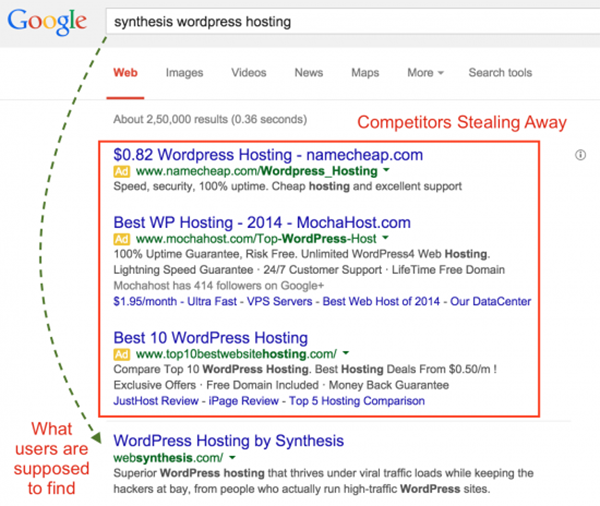
Another example. This is a perfect example where you’ll end up paying pennies per click because Buffer itself is not bidding on its own brand.
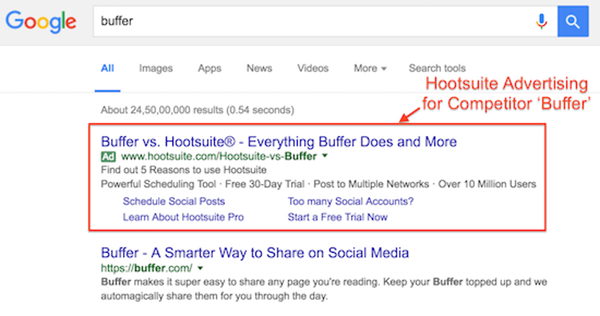
If your competitor is also bidding on its own brand, you can still bid but in this case, you’ll not be able to drive as much traffic and you’ll pay high CPC.
This AdWords hack works best with competitors that are famous and people search them. If your competitor is not bidding on its own brand terms, you’ll enjoy an extremely low CPC.
But it is risky too.
Mainly because if I’m searching for GoDaddy, you’ve got to have something way better to offer me in order to make me click on any other search result. If I’m a loyal customer, I’ll never click on anything but GoDaddy.
You’ve to go a step forward like HootSuite. Instead of simply bidding on the brand terms, tell customers why you’re better. Do a comparison. Or maybe, offer them something free.
It needs serious testing but since CPC is low, you shouldn’t mind playing around.
There are four different types of competitor terms that you can bid on.
- You can bid on competitor’s brand or company name such as Buffer, Hostgator, GoDaddy, etc.
- You can bid on competitor’s URL, domain name, and its variations.
- You can bid on product names like Inspiron 15 5000 Series.
- You can bid on your competitor’s SKU numbers, models, and even parts.
This is one of the best hacks that will instantly boost your CTR. You’ll notice that your other competitors don’t (always) follow this strategy because they don’t know how to play safe and smart.
Take your game to the next level.
6. Use negative keywords
A negative keyword is a keyword that prevents your ad from triggering. If the negative keyword is a part of the search term, your ad won’t be triggered.
Negative keywords are a smart way to improve CTR, conversion rate, and ROI of your AdWords campaigns pretty much quickly. Not adding negative keywords will trigger your ads to queries that are irrelevant to your ad copy.
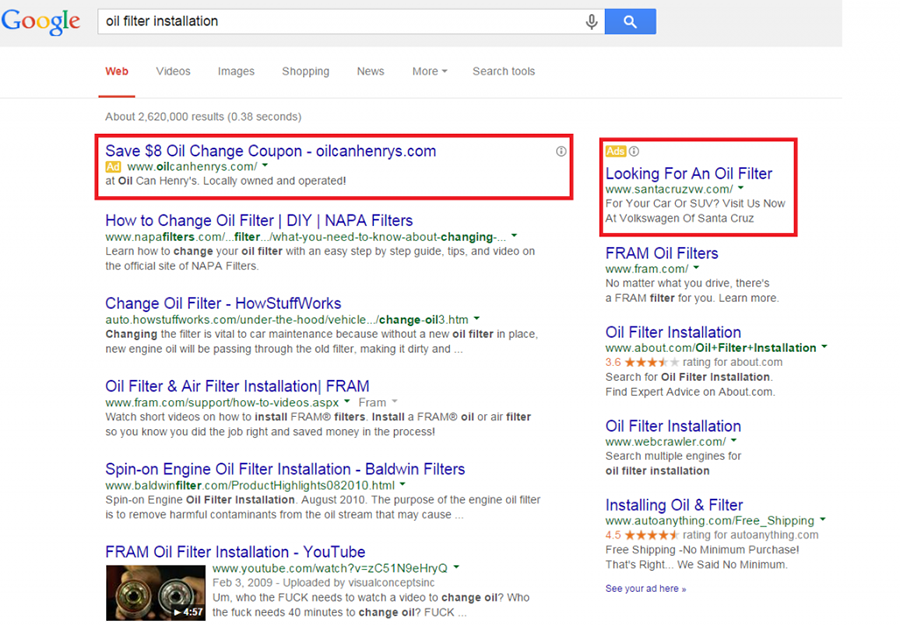
When your ads are irrelevant to the search term, it will negatively impact QS score resulting in a reduction in CTR. Irrelevant ads won’t drive many clicks.
When Emergency Restoration Specialists added negative keywords to their AdWords campaign, they generated more leads than they could handle.
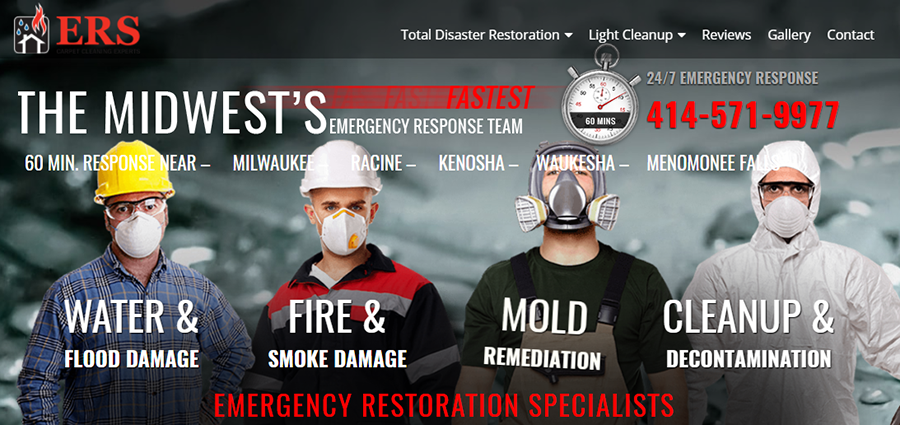
You can achieve similar results (and even better) if you’ll integrate negative keywords. Every campaign has some negative keywords that ruin CTR and ROI.
Some of the most common negative keywords that you should add to your campaign are:
- Cheap
- Free
- Torrents
- eBay
- YouTube
- Sex
You can see the complete list of 75 negative keywords here.
Besides, you have to find search terms that trigger your ads and add irrelevant keywords to negative keywords. Follow these steps to do it.
Generate your search terms report by clicking Keywords from AdWords dashboard and then click Search Terms.

You’ll see a report like this.
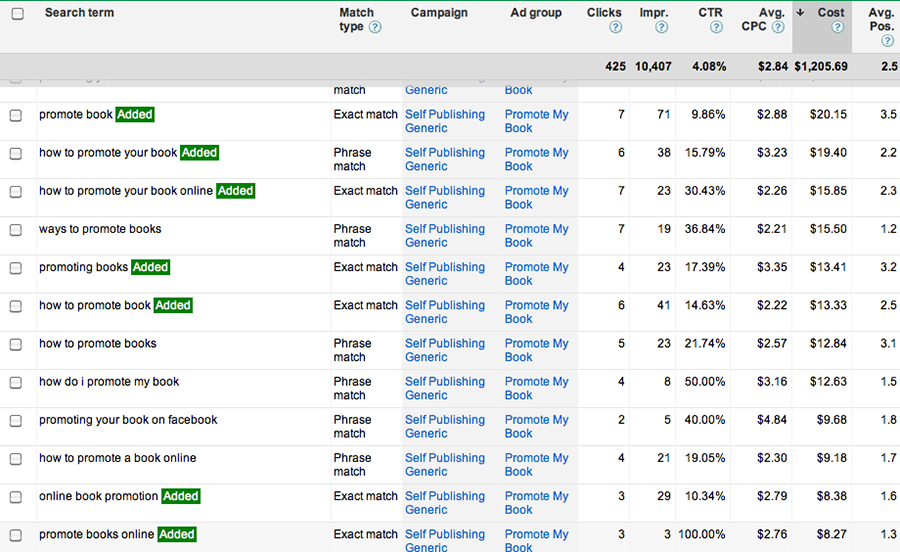
Carefully scan every keyword and note all the irrelevant keywords that you don’t want for your ad groups.
To add negative keywords, click Negative keywords under Keywords tab in AdWords.
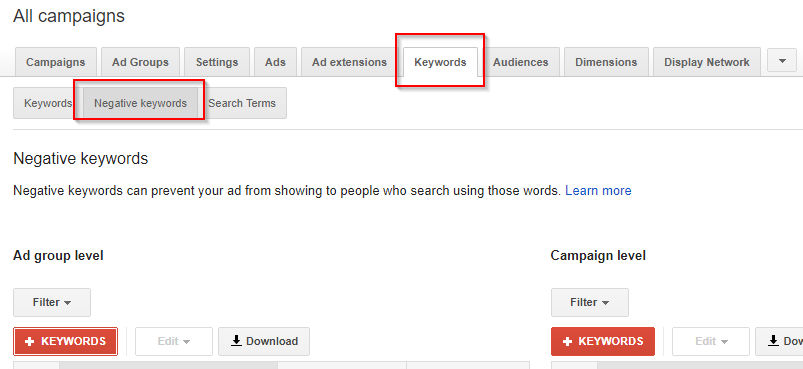
You can add negative keywords to ad group level and campaign level. If a negative keyword is irrelevant for the entire campaign, it should be added to campaign level. All other ad group level negative keywords should go to ad group level.
After you’ve added negative keywords, your ads won’t trigger for all these keywords and this will improve CTR and ad relevancy.
Integrating negative keywords is a continuous process. You’ve to generate a new search terms report every week (at least). You’ll see a few irrelevant keywords every time.
Keep moving them to negative keywords to enjoy better CTR and ROI.
7. Organize keywords
If you’ve got multiple ad groups and several ads and a few hundred keywords in each ad group, you’ll hate dealing with negative keywords because it will eat most of your time every week.
This is one reason why negative keywords are mostly ignored by marketers.
Organizing keywords and grouping them (as discussed earlier) is one of the best hacks to improve CTR and increase ROI. In fact, there are several benefits of grouping keywords.
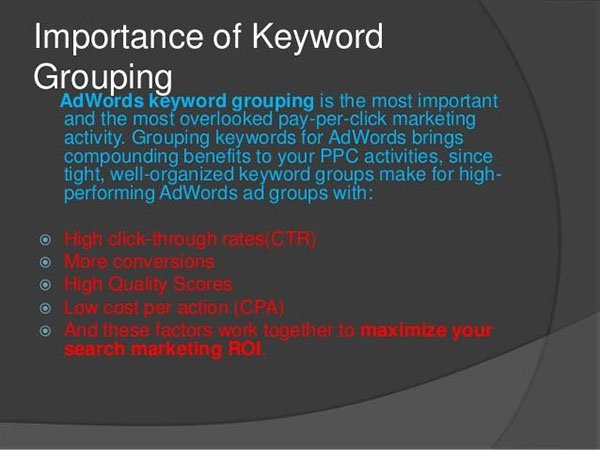
So how do you organize keywords to improve CTR, QS, conversion rate, and ROI?
Create small ad groups: The smaller an ad group is, the easier it will be to manage keywords. The best rule is to have no more than 10 keywords in a single ad group and each ad group should have no more than 4 ads.
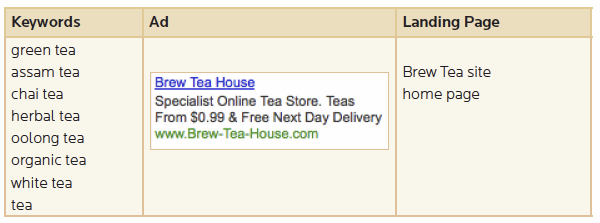
This won’t just help with organizing keywords but it makes the testing way easier. Imagine if you’ve to test two different landing pages, you can easily do it for any given ad group.
New campaign vs. new ad group
It’s critical to understand when you’ve to create a new campaign and when you’ve to create a new ad group. This helps a lot with keeping things under control and thus maintaining control on your keywords.
There are three different situations that will help you decide when to create a campaign and when to create a new ad group.
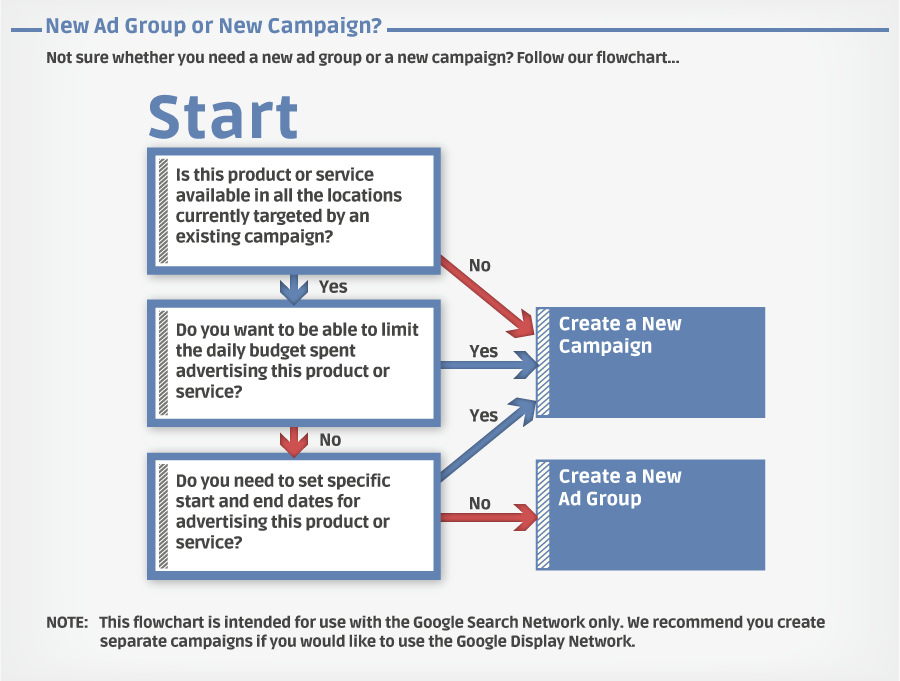
Just like keywords, you’ve to organize ad groups too. This will allow you to manage keywords easily. According to WishPond, the best way to organize ad groups is by match type.
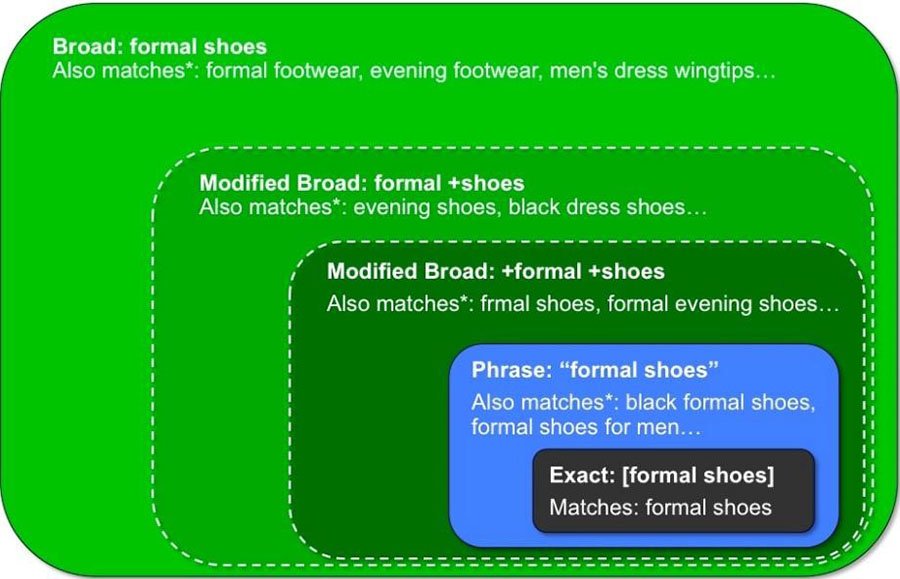
Use an Excel sheet: Use a master excel sheet to organize all your keywords at a single place. This master list should include all the keywords as well as negative keywords.
This master sheet should be your reference point and must contain all the information about keywords, ad groups, negative keywords, campaigns, ads, landing pages, products, offers, and everything else.
If you know how to use Excel formulas, organizing keywords will get a whole lot easier in Excel.
8. Optimize better than your competitors
You know that you have to do better than your competitors whether it be sales, search engine ranking, or paid traffic. But the big question is how you can do better than your competitors’ ads in AdWords?
This AdWords hack can help you outperform your competitors in AdWords overnight. If you’re planning to start a new PPC campaign for a franchise tomorrow, this hack will blow you away.
You can copy your competitors’ best performing and most profitable keywords and can improve your AdWords ROI significantly. Here is how to do it.
Visit SpyFu and enter your competitor’s website and click search.
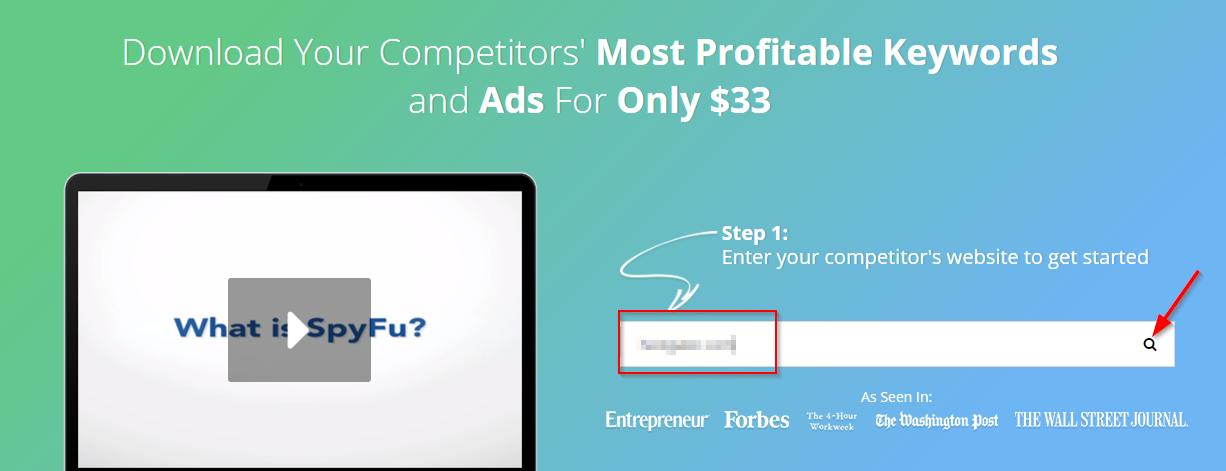
Click Paid Keywords.
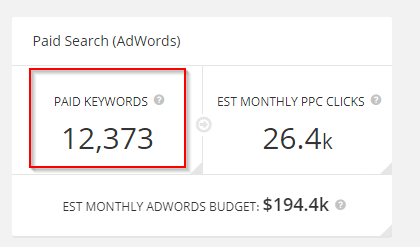
You’ll see all the paid keywords with their CPC, monthly cost, monthly searches, ad position, and the total number of ads that are targeting that keyword.
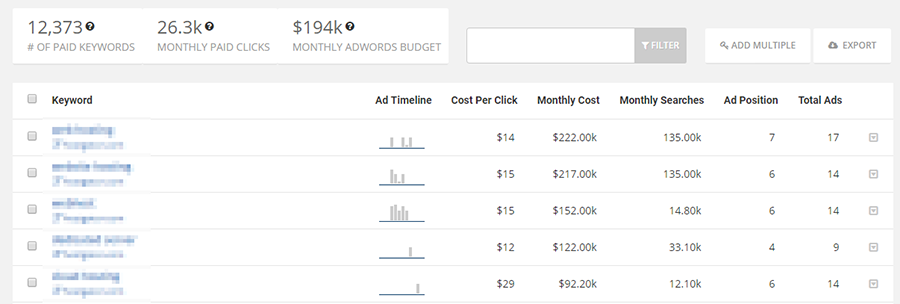
Apply filters to find keywords with lowest CPC and best performing keywords. Target them.
This little hack will give you a decent starting point for any AdWords campaign.
SpyFu is just one tool, there are several other tools that will provide you similar information, for instance, you can try iSpionage. These competitor spy tools give you a wealth of data on the paid traffic. You’ve to make sense of the data and use it to improve your campaigns.
9. Use DKI keyword in the headline
A Dynamic Keyword Insertion (DKI) is an AdWords feature that updates your keyword according to customer’s search query. When you insert a DKI in the headline, it will be replaced by the search query.
If your complete headline is a DKI, it will be replaced by the search query. Here is an example.
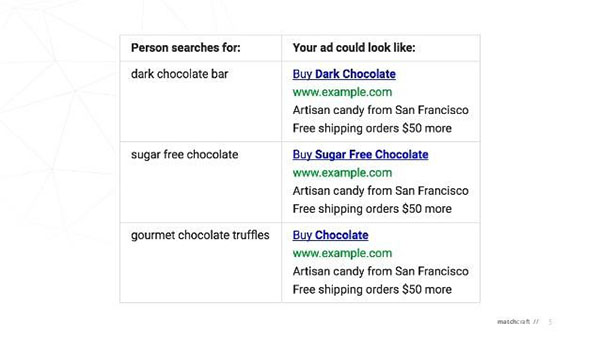
DKI can be used in any part of the ad copy but the best hack is to use it in the headline so that it stands out from the crowd and gets clicked. All you’ve to do is select Keyword Insertion when creating your ad.
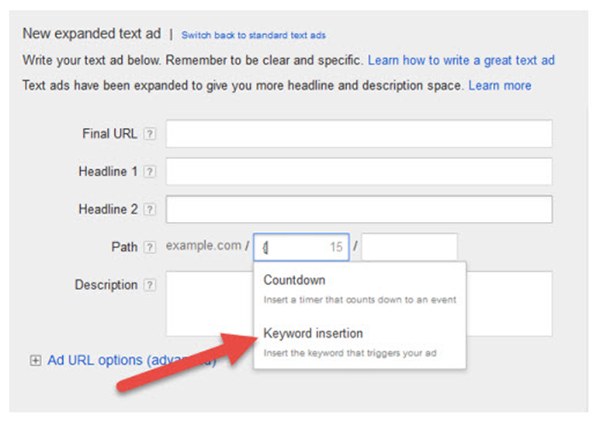
DKI has proven to increase CTR. Replacing normal keyword with DKI increased CTR by 68.34%.

Here is what happens when DKI is used at a wrong place.
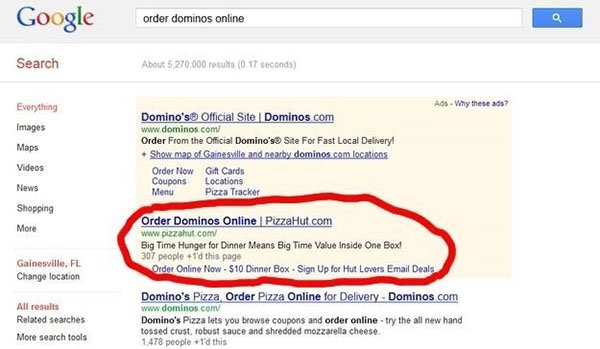
The above ad was a smart move by Pizza Hut but the ad was flagged as it looked deceptive.
When using DKI, you’ve to be extra cautious because your ad can look weird and can make no sense at times. You’ve to have a good understanding of the type of keywords you’re using, you must have negative keywords, and make sure you’re not using it with broad match.
Here are a few next level tips to get better with DKI.
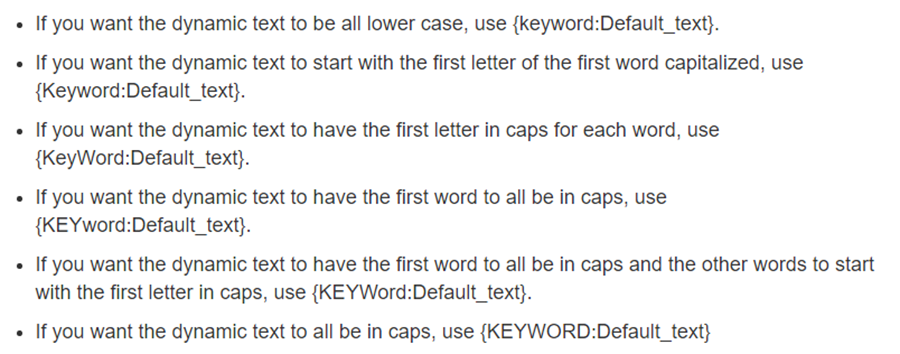
If done right, this single AdWords hack can boost your CTR big time.
10. Leverage in-market audiences
According to Google, the in-market audience includes customers who are actively involved in browsing, researching, and comparing products in your target market. These are the people who are more likely to buy your products.
These are the people who are ready to buy.
Selecting in-market audiences will show your ad to people who are most likely to click and convert. This is one great way to increase ROI of your campaigns.
It’s a Display Network feature. You can find in-market audiences by clicking Display Network and then click Interests & remarketing.

Click Targeting and select Interests & remarketing.
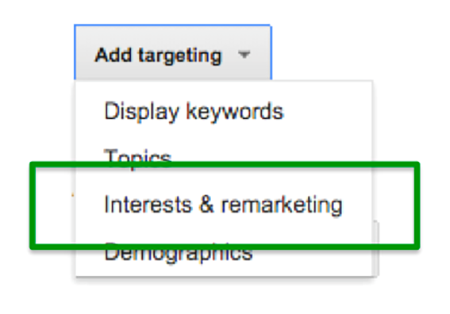
You’ll see in-market audiences with a massive list of categories. Choose the one that best suits your business.
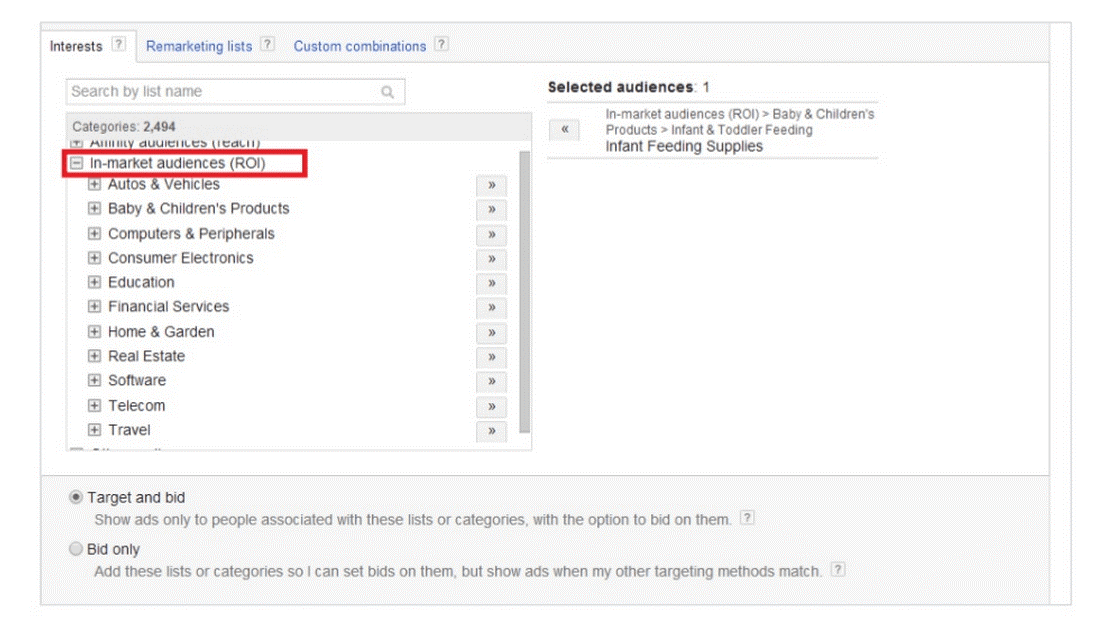
In-market audiences is a perfect way to increase ROI. Start using it today.
11. Use income targeting
Just like in-market audiences, you can target audience on the basis of their income. It is one of the most effective AdWords hacks that is often overlooked. There are certain industries and niches where income targeting can turn the tables.
For instance, if you’re selling high-end holiday packages, income targeting will help you show your ads to the people who can actually afford your packages. It comes handy for luxury products and services.
This won’t just boost CTR but it will increase revenue. Income targeting for luxury products will filter out traffic that can’t buy your services thus you’ll only show up for clicks that actually count.
Even if you don’t have a luxury product, you can still use income targeting. Target different income groups and see what works best. This will help you target most appropriate people in future.
You can find income targeting under Settings tab in Locations.
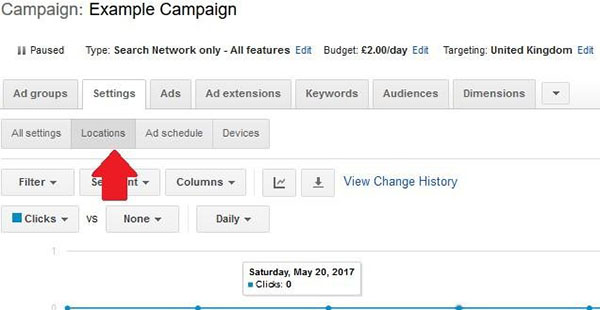
Select the country and click Advanced search.
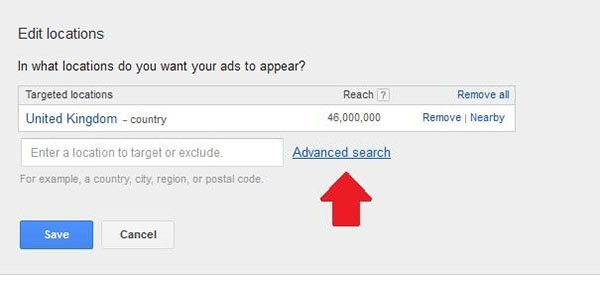
Click Location groups.

Select Demographics.
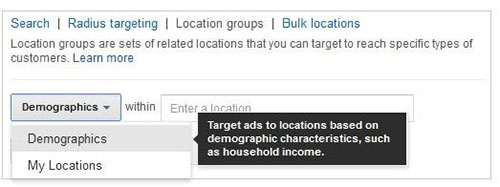
Select income group.
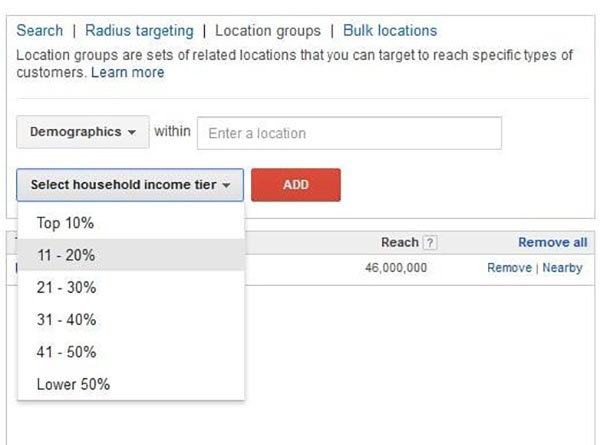
To take income targeting to next level, use each of income groups for all ad groups. This will provide you with the income group that responds best to your ad and product.
12. Use remarketing to boost ROI
Statistics show that cart abandonment for all the sectors for the last quarter of 2016 was almost 77%. This means 77% of people leave your store with products sitting in the cart.
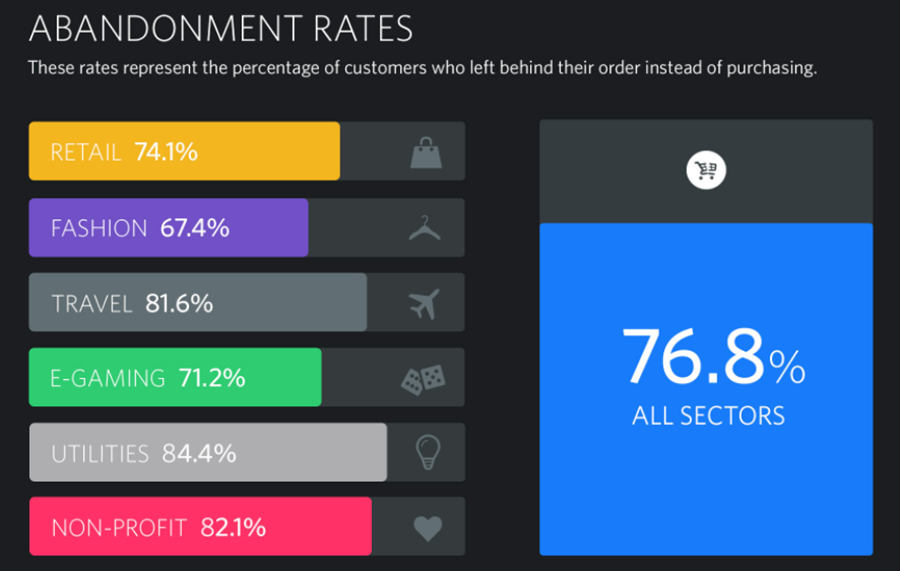
This rate reduced to 75.6% in the first quarter of 2017.
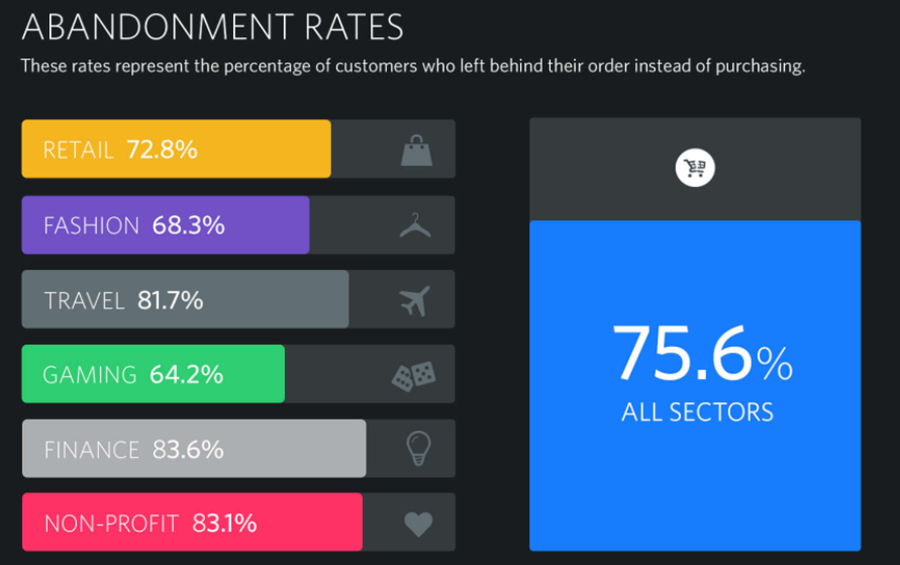
It’s good to see a 2% decline but it is still too much – way too much. It means if 100 people clicked your ad and landed on your website. As much as 75 of them won’t buy anything from your site.
This is the reason why remarketing is one of the best hacks to deal with cart abandonment and to increase ROI.
Instead of showing your ads to new people who don’t know your brand, you show your ads to people who have been to your website and know you. These people are more likely to buy. This is what remarketing is.
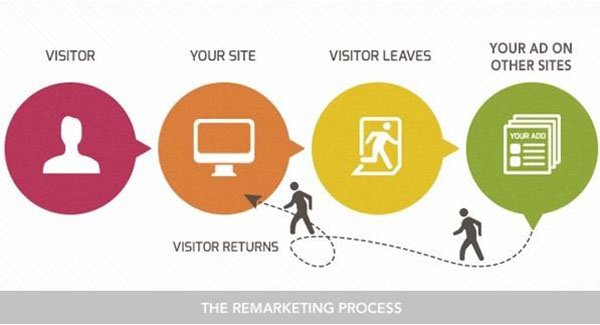
Remarketing increases ROI. Statistics show that consumers who see a remarketing ad are 70% more likely to buy.
AdWords offer you a whole lot of different remarketing options such as standard remarketing, dynamic remarketing, video remarketing, and others.
Remarketing can be accessed by clicking Audiences, click Remarketing, and click Targeting.

Select campaign or ad group and then select Interests & remarketing.
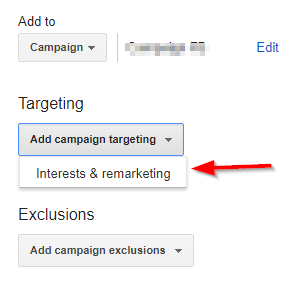
If you don’t have a list already for remarketing, you can create a list by clicking Create and manage lists at the bottom of the page.
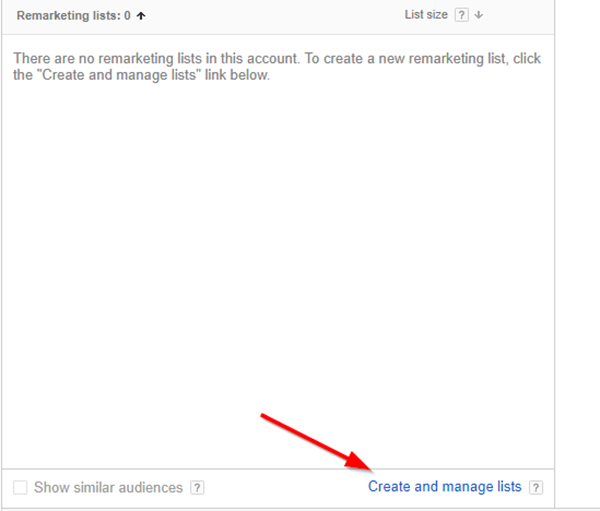
Select an appropriate list to create it. Since you need to remarket to people who have visited your website via an ad, you should select Website visitors.
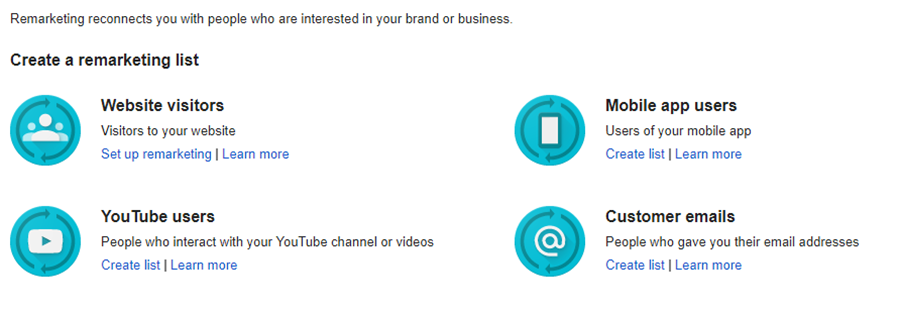
Once you’ve setup a remarketing list, your ads will be shown to people who have already visited your website to bring them back.
This AdWords hack will skyrocket your ROI but it won’t deliver results as quickly as some of the other hacks we have discussed above. Our display marketing experts are always happy to share their knowledge with others less experienced.
13. Use ad schedule
Do you know that you can schedule your ads in AdWords? You can.
Ad schedule feature is extremely helpful in boosting CTR and ROI of your ads. There are certain ads that you should schedule.
For instance, if you’re using call extension with your ads, don’t make the mistake of running your ads throughout the day. Schedule your ads so that your ads only run during office hours when there is someone to attend the call.
Else, you’ll ruin your ROI.
This is not the only way to use ad schedule. You should schedule your ads when they perform best.
You’ve to identify when your ads do best. Initiate an hour of day report from AdWords.
Click on Dimensions, Day and then click Hour of day.
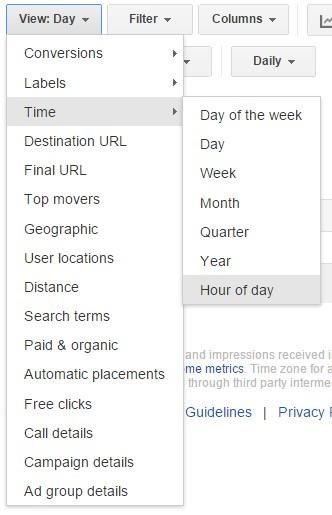
Download the report. It will look something like this.
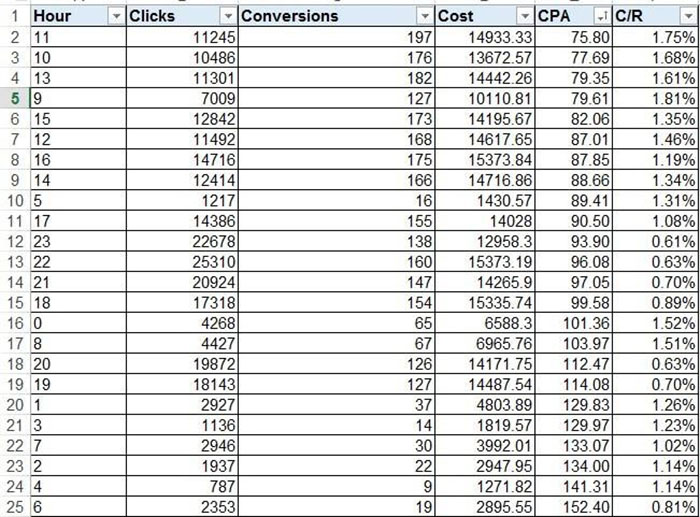
Apply filters and find hours with low CPA and high conversion rate. These are the hours that you should schedule your ads for to boost ROI.
You can access Ad schedule by clicking Settings and Edit.
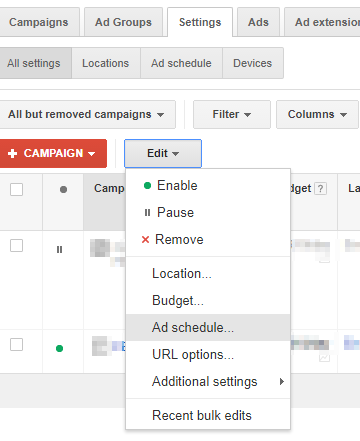
Schedule your ads.
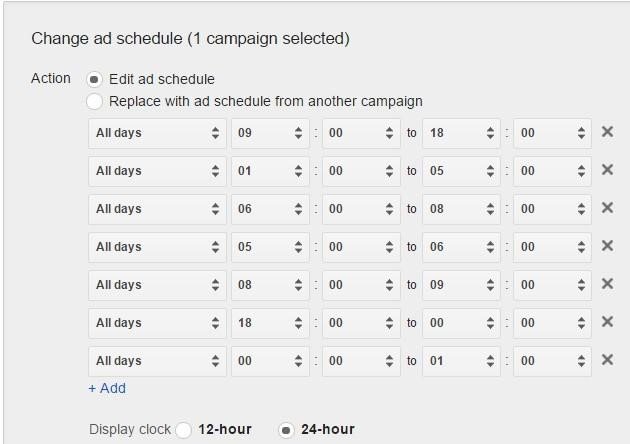
To make it even better, you can adjust bids for these hours so that your ads are pushed to the first page.
You know that your ads will convert exceptionally during these hours so it doesn’t hurt to increase the bid.
Interesting, right?
Conclusion
When you start seeing decent CTR and ROI, the next step is to test and tweak your ads and campaigns for improvements.
Keep an open mind when it comes to Google AdWords because there’s a lot you can learn when choosing your keywords, creating new campaigns and ad groups, as when you place bids.
As always, I’d love to hear from you. Which of these Google AdWords hacks have you implemented? Share your experience thus far.

